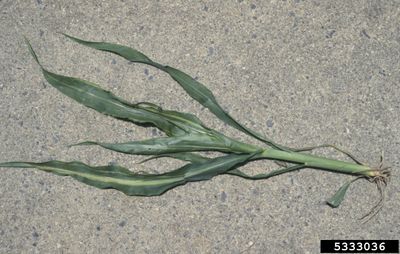Managing Corn with Stewart’s Wilt
Manifesting in the form of linear stripes on corn leaves, Stewart’s wilt of corn (corn bacterial leaf spot) is caused by a bacterium called Erwinia stewartii. Infections are generally classified into two types based on when each occur: seedling stage and the leaf blight stage, which impacts older and more mature plants. When infected with Stewart’s wilt, sweet corn may prematurely die back regardless of the age of the plant, if the infection is severe. The good news is that the probability of high incidence of Stewart’s wilt of corn can be predicted. Those who keep careful records can determine the threat of infection based on weather patterns throughout the previous winter. This is directly related to the fact that the bacteria is spread by and overwinters within the corn flea beetle. While it is possible to control flea beetles through the use of insecticides approved for use in the vegetable garden, the frequency at which the product must be used is generally not cost effective. The most effective means by which to control corn bacterial leaf blight is through prevention. Make certain only to purchase seed from a reputable source in which the seed has been guaranteed to be disease free. Additionally, many corn hybrids have proven to show great resistance to Stewart’s wilt of corn. By choosing more highly resistant varieties, growers can hope for healthier harvests of delicious sweet corn from the home garden.
Varieties Resistant to Stewart’s Wilt of Corn
‘Apollo’ ‘Flagship’ ‘Sweet Season’ ‘Sweet Success’ ‘Miracle’ ‘Tuxedo’ ‘Silverado’ ‘Buttersweet’ ‘Sweet Tennessee’ ‘Honey n’ Frost’
